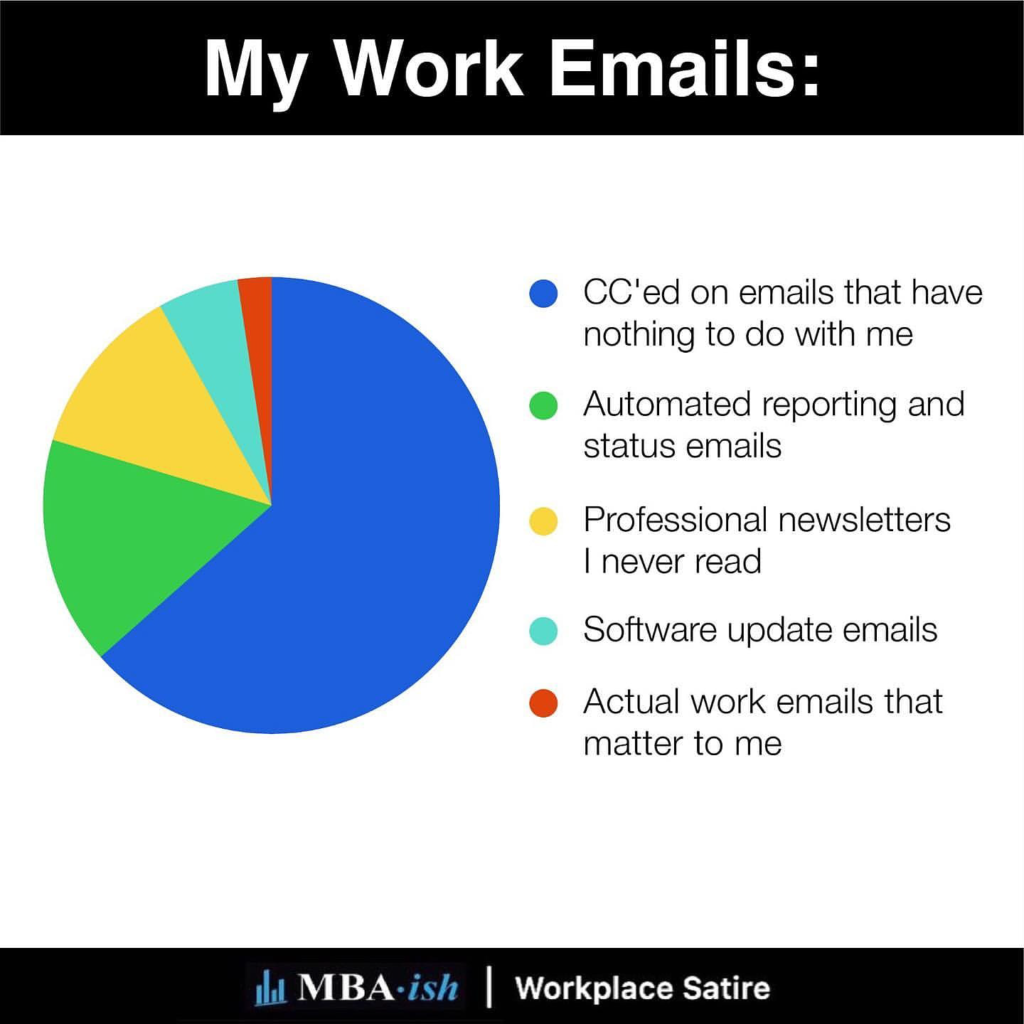How do I respond? (To Inbox-zero or not?)

Currently, there are many mediums now that in the workplace you can be contacted with. Communication is changing rapidly and in the workplace, in my opinion, it is even changing more rapidly. I am a big proponent of inbox zero and find I am somewhat annoyed at times with people who use the excuse with clients that they have to many emails or take their unread email as a badge of honor when they have thousands of unread emails. In an ideal workplace, we would limit waste and in reality, an email or another form of communication would not need to be repeated or clarified and initiate or help provide value to solutions. What I have often seen in many (non-agile) environments is communication is a struggle as often bureaucracy and authority impede deliverables being completed with quality and speed. It has become easier now to communicate, delegate and empower employees with technology allowing for easier oversight and transparency. Often inbox zero starts with a culture of customer-centricity and responsiveness allowing for an expectation from sponsors to respond to email and often other mediums.
INBOX- ZERO RULES
In my last position, I was trying to help solve some cultural issues and one of them was responsiveness to colleagues and clients. One thing I asked many people were how they organized their email and other communication it varied greatly but individuals who had a lot of email and communication and could stay responsive had some things in common they had a method they followed to organize there inbox an example I saw that worked is below:
- If a message requires no action on your behalf, archive it immediately.
- If a message requires a simple reply that you can knock out in a minute or less, respond right then and there—and then archive it immediately.
- If a message requires some level of thought or response that you can’t get to right away, snooze it to a time and date when you will be able to handle it—whether it’s later that same day, sometime the following week, or on a Friday two months down the road. That’ll get the message out of your way so it doesn’t serve as a constant source of distraction. And then it will reappear and grab your attention when the time is right.
I personally have often followed the above but to go further for any communication I have usually split it into Delete, Delegate, Respond, Defer or Do and experimented with different ways to get myself organized to be more responsive and customer-centric. I also found in many of my emails I started really clarifying for the person what I was asking or if it was an FYI right in the subject. I often introduced BLUF (Bottom Line Up Front) to teams I worked with as the military uses very concise and clear subject lines that elicit action. (See here)
- ACTION – Compulsory for the recipient to take some action
- SIGN – Requires the signature of the recipient
- INFO – For informational purposes only, and there is no response or action required
- DECISION – Requires a decision by the recipient
- REQUEST – Seeks permission or approval by the recipient
- COORD – Coordination by or with the recipient is needed
OTHER COMMUNICATION MEDIUMS
I have found emails addressing the action needed to the person lets them understand what is needed and if it is just information then if the individual is swamped it allows them not to focus on the email. Let me say that I realize an email is seen very differently than many other mediums. I personally often do not expect a prompt response and would not use email too often on something I need a quick response on but I have noticed if I see someone is online I might shoot them a Slack or Teams message or something that we are socialized to respond to right away fairly informally. If I do not get a response I usually will pick-up the phone, I realize that there are so many channels now for communication with technology. Choosing the method of communication for me has been interesting as in my last 2 roles utilizing video calling has become more common for proposals as well as various meetings. Choosing a medium for myself for communicating is very dependent on my purpose and as well the level of touch I need to meet my goal or to be successful in the initiative.
I also want to state I understand there are those people who cannot get to the bottom of their inbox without assistance. Many times executives need assistance in getting organized and focused, often Executive Assistants can help if delegated to.
Is Inbox Zero Worth It?
Limiting my unread emails in my inbox has helped me get organized with structure and allow me to focus on actionable and value-added items. I often do not get to zero in my inbox but have made a commitment now for the last 3 years I have made sure at the end of each week I have made sure my inbox is cleared to a minimal follow-up. I understand that some people do not believe in inbox-zero and that is fine but everybody has been in the position when they send an email to somebody and are not sure if it will ever be responded to. I would argue if you want a culture where accountability and customer-centricity are important being able to consistently communicate with colleagues or customers in a timely matter is paramount. So when you look at your thousands of unread emails I would question if let’s say on number 500 there is something important that somebody should have called you about but didn’t how would you respond? I like discussion so if you do not really feel inbox zero is an appropriate standard for today’s workforce? (FYI – I have been in positions where I get over 500 emails in a day and have managed to keep my emails close to zero unread with some rules and organization). I think this level of email for me was not acceptable and I found I needed to delegate much more and empower employees to free myself up and have a larger impact.

Fahim Moledina is the Principal Consultant for Opti-Syn Consulting and is a business leader with expertise in project/change management, finance, lean/agile methods, as well as marketing and sales. He has a passion for technology and has led multiple business transformation projects.
If you enjoyed this please subscribe and share this below:



Recent Comments